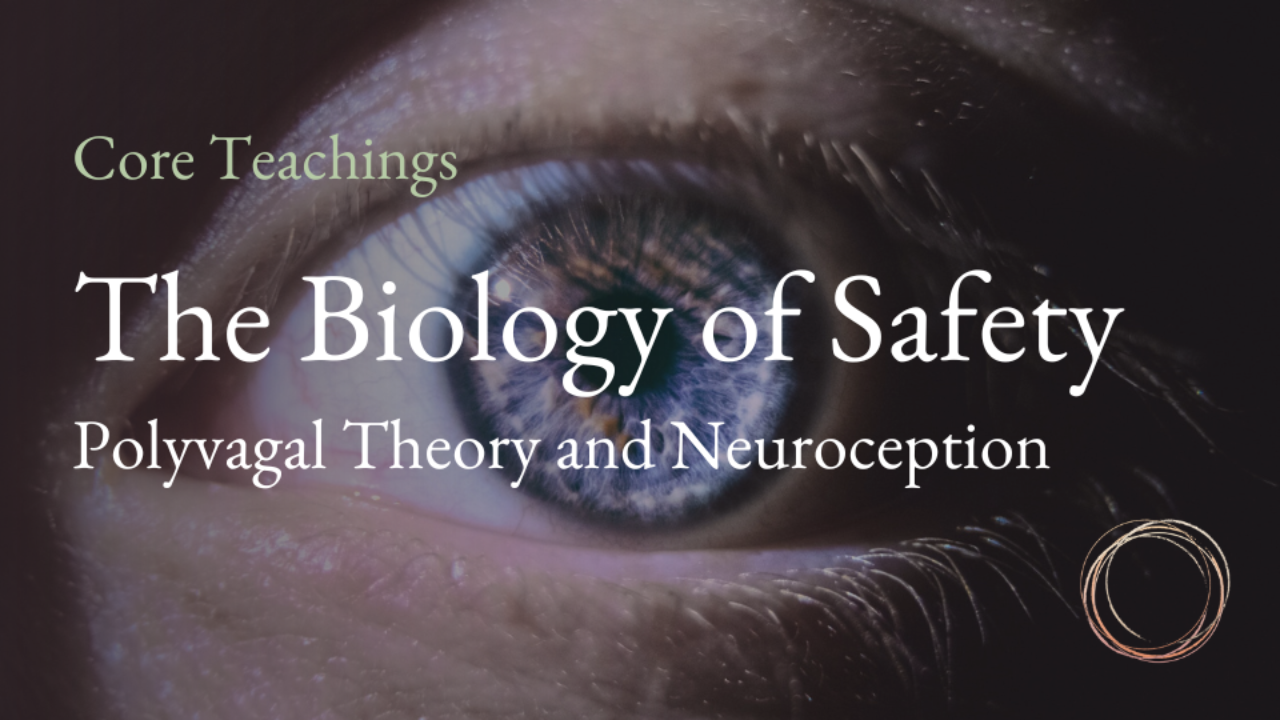The Biology of Safety
Sep 13, 2023
Throughout our 'Core Teachings' series we're introducing a number of concepts to help you build up an understanding of what’s happening in the body and brain when we are feeling safe and when we are triggered.
In this post we’ll be looking at polyvagal theory, which gives a more nuanced description of the mechanisms underlying the maps of the window of tolerance and the triune brain described elsewhere.
Ployvagal theory
Similar to the model of the triune brain, polyvagal theory proposes that the nervous system is organised into three interconnected neural circuits, each associated with specific physiological and behavioural responses.
The first circuit is the ventral vagal complex, associated with feelings of safety and connection. When activated, it supports social engagement, allowing us to establish and maintain positive social interactions. It promotes facial expressiveness, vocal modulation, and a sense of calm.
The second circuit is the sympathetic nervous system, which activates the fight-or-flight response in the face of perceived danger. This response mobilizes our body for action, preparing us to either confront the threat or flee from it. It is linked to the release of stress hormones and increased heart rate.
The third circuit is the dorsal vagal complex, related to immobilization and shutdown responses. When the body perceives extreme threat or feels helpless, it triggers a freeze response, leading to dissociation, numbing, and disconnection. This circuit is associated with conserving energy and reducing metabolic activity.
You should be able to see the clear similarities between polyvagal theory, the triune brain and the window of tolerance models.
They all map a three-part division of the nervous system, include both physiological and behavioural aspects, and help us recognize and track inner states.
What is unique to polyvagal theory is that it helps us understand the autonomic (involuntary, automatic, somatic) mechanism that shifts us from one state to another in response to triggers.
Central to this mechanism is the concept of neuroception.
Neuroception
Neuroception refers to the subconscious detection and evaluation of safety or threat cues.
It’s an active process that’s constantly scanning our external environment, our internal states, and relationships for cues of safety, threat or danger.
It continuously monitors and processes signals from various sources, such as visual, auditory, and olfactory inputs, sensations, movements and movement impulses, as well as the biological effects of our emotional and mental activity.
But it’s important to emphasise that the process of neuroception is entirely subconscious, automatic, and somatic.
Through neuroception, our nervous system determines whether a situation is safe, dangerous or life-threatening, and immediately regulates our physiological and emotional responses accordingly.
When neuroception detects safety cues, the ventral vagal complex, which is part of the parasympathetic nervous system, becomes active.
As we’ve seen, this circuit promotes social engagement, feelings of connection, a sense of safety, and everything that comes with that – our curiosity, creativity, playfulness, compassion, and capacity for genuine intimacy.
On the other hand, when neuroception detects cues of danger or threat, it triggers the activation of the sympathetic nervous system, leading to the fight-or-flight response.
This prepares our body for action and helps us deal with potential threats or challenges – but in so doing takes offline our relational capacities of empathy, attunement, and awareness.
If the threat is perceived as overwhelming, or escape seems impossible (essentially, if the fight-or-flight response seems futile), neuroception may lead to activation of the dorsal vagal complex, resulting in immobilization, shutdown, and dissociation.
Neuroception is therefore a central component in the picture we’ve been developing around the somatic sense of safety.
Neuroception and somatic safety
Whenever we feel safe, it is our neuroception which is creating that sense of safety, in a way that is rooted in our body’s fundamental neural architecture and below the level of conscious thought.
And so, if we are to consciously try to enhance our sense of somatic safety, it is essential that we work at the level of our neuroception, befriending our body’s own intelligence with its exquisitely sensitive nervous system and finely tuned survival instincts.
This is what we mean by a bottom-up approach.
And this is why we keep emphasising the use of our somatic resources in regulating our nervous system.
Regulating in this way involves mindfully mimicking what the body naturally does when it feels safe:
In the state of safety, we automatically breathe deeply, we are unafraid to make expressive sounds and movements, we connect through touch, our visual focus is softer...
And so by consciously choosing to do these things when we are triggered, we coax our neuroception into believing that we are in fact safe, which it then responds to by activating the neural circuit of safety.
This then generates a fuller sense of somatic safety, bringing online the more expanded range of relational capacities that come with the social engagement system.
The crucial point to mention here is that this whole process of somatic resourcing requires an initial moment of mindfulness, in which we become aware that we are triggered and then choose to do something about it.





